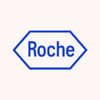
A Study of Nitazoxanide in the Treatment of AIDS-Related Diarrhea
HIV InfectionsTo determine the pharmacokinetics profile of single doses of nitazoxanide (NTZ) in patients with AIDS-related cryptosporidial diarrhea. To determine steady state concentrations of NTZ following repeated dosing. To assess the safety and efficacy of 4 dose levels of NTZ in these patients. Cryptosporidial enterocolitis in AIDS patients is frequently chronic and severe, contributing substantially to morbidity, mortality, and health care costs in this population. NTZ exhibits antimicrobial activity that may extend to Cryptosporidial infection.

A Study to Compare Two Anti-HIV Drug Combinations
HIV InfectionsThe purpose of this study is to compare 2 anti-HIV drug combinations.

A Multi-Center, Placebo-Controlled, Double-Blind, Randomized Trial Comparing the Virologic and Immunologic...
HIV InfectionsPRIMARY: To compare the virologic activity (quantitative RNA PCR, quantitative PBMC) of the combination of nevirapine and zidovudine (AZT) versus AZT alone after 3 and 6 months of treatment. To compare the effects of these two regimens on CD4 T-cell count and percentage. SECONDARY: To compare and evaluate other markers of immunologic and virologic activity in patients receiving nevirapine/AZT versus AZT alone. To compare the effects of the two regimens on clinical signs and symptoms. To evaluate the safety and tolerance of the two regimens.

The Safety and Effectiveness of Nevirapine and Zidovudine, Given Separately and Together, in HIV-1...
HIV InfectionsPRIMARY: To compare the effect of nevirapine versus placebo alone or in combination with zidovudine (AZT) on CD4 T-cell count and percentage after 3 and 6 months of treatment. To evaluate the safety and tolerance of nevirapine alone or in combination with AZT. SECONDARY: To compare the effects of the various treatment combinations on virologic and immunologic markers.

A Study of Multiple Doses of Vesnarinone in Advanced HIV Disease
HIV InfectionsTo evaluate the safety and tolerability of four doses of oral vesnarinone in patients with advanced HIV disease.

A Study of L-735,524 in HIV-Positive Children and Adolescents
HIV InfectionsTo evaluate the safety, tolerability, and plasma concentration profiles of indinavir sulfate ( MK-639; Crixivan ) in HIV-seropositive older children and adolescents. To compare the plasma concentration profile after the initial dose with data from a historical group of adults. To obtain preliminary data on antiviral activity of MK-639.

The Safety and Effectiveness of HBY 097 Used With or Without AZT in HIV-Infected Patients Who Have...
HIV InfectionsTo obtain preliminary information on the safety, tolerability, and antiretroviral activity of HBY 097 alone or in combination with zidovudine ( AZT ) versus AZT alone. PER 1/19/96 AMENDMENT: AZT monotherapy arm was eliminated.

The Safety and Effectiveness of SPC3 in HIV-1 Infected Patients
HIV InfectionsTo assess the effects of two doses of synthetic peptide construction 3 ( SPC3 ) on HIV-1 plasma levels (as measured by RNA PCR Amplicor) and on lymphocyte subsets in patients with initial viral load above 10,000 copies/ml. To study the safety of SPC3 and the kinetics of HIV-1 plasma level changes.

Safety and Effectiveness of Giving Indinavir and Nelfinavir to HIV-Infected Patients
HIV InfectionsThe purpose of this study is to see if it is safe and effective to treat HIV-infected patients with indinavir (IDV) plus nelfinavir (NFV), 2 anti-HIV medications. It is thought that IDV plus NFV will be a safe drug combination for treating HIV.

The Safety and Effectiveness of Two Forms of Saquinavir Combined With Other Anti-HIV Drugs in HIV-Infected...
HIV InfectionsTo determine the pharmacokinetic properties, tolerance and safety of 2 formulations of saquinavir, given in combination with 2 nucleoside antiretroviral drugs (part 1) or in combination with nelfinavir and nucleoside antiretroviral drugs (part 2), in HIV-infected infants and children.
